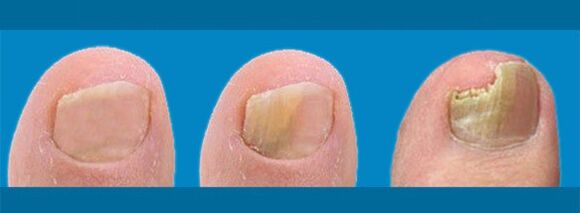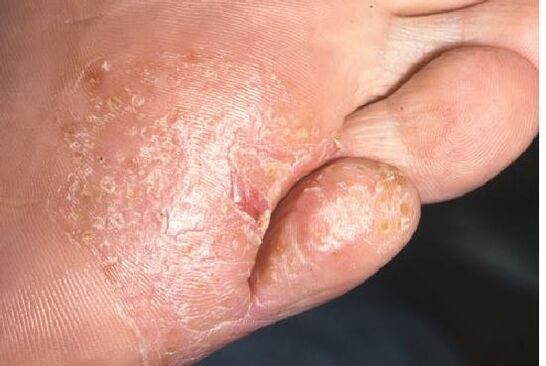What does onychomycosis look like?

- Nutrition is normal.This is the initial stage of onychomycosis. The cuticles become discolored, develop yellowish-white spots and streaks, and emit an unpleasant odor. This is the initial stage of the disease, so the nails maintain a normal thickness and a relatively healthy appearance. This phase begins at the end of the incubation period.
- Hypertrophic type:The color changes more, the plate starts to thicken and the shine disappears. Shape changes and partial destruction of the plate along its edges can be observed.
- Atrophic:The affected nail separates from the nail bed.
- remote.The edges of the plate appear delamination and yellowing, and the nail bed becomes keratinized. In some cases, the nail may be affected entirely, and its root (matrix) may also become infected. Thinning of the board may occur.
- surface.The fungus affects the upper portion of the cuticle, causing white streaks and spots that turn yellow and increase in size over time. They can be easily removed by scraping. The board structure is loose. This type is special: This is how toenail fungus appears.
- near end.The fungus occurs under the nail and causes damage to the matrix and tissue surrounding the nail plate. Cuticle rejection may occur. Deep grooves and irregularities appear on the nails.
- All of them.The nails are grayish-yellow, become very thick, and flake. The board suffered complete or partial damage.
foot skin fungus

In the first stage, the infection appears as redness, swelling, and small cracks in the skin.















